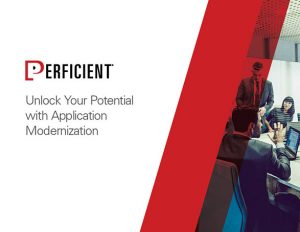In today’s ever-changing technology environment, enterprises need to adapt to change faster than ever before. By adopting modern software and updated processes, you will be able to transform your IT environments and deliver services better and faster than your competitors.
Agile integration could be the solution. It combines three architectural capabilities – distributed integration, APIs, and containers – to make your business more agile, power new processes, and deliver a more competitive advantage. (Here, “agile” is referring to the flexibility, adaptability, and ability to move quickly, not agile development.)
Usually, agile methodologies tend to focus on software development, improving and streamlining how you build and deploy your applications. But infrastructure agility enables you to create an environment that encompasses all of your IT systems, including your legacy software.
Agile infrastructure, or integration, breaks down the complexities of your existing systems, disparate data, and customer expectations, and brings them together in one place.
How to adopt agile integration
Unlock Your Potential with Application Modernization
Application modernization is a growing area of focus for enterprises. If you’re considering this path to cloud adoption, this guide explores considerations for the best approach – cloud native or legacy migration – and more.
Historically, your IT teams plan for software deployments months – even years – in advance. They’re dealing with so many moving parts and legacy infrastructure that could result in the loss of hundreds of thousands of dollars if something goes wrong.
To stay relevant, you need to plan, build, and deploy IT updates quickly. By aligning integration technologies with agile and DevOps technologies, you can create a platform that enables development teams to change quickly and meet the demands of your business.
How do you change the development process and introduce more agile practices?
Changes need to occur at both the organizational and cultural level, as well as at the technical level. Your technical infrastructure is only the beginning. You need everyone in your organization on board and supporting the adoption of agile processes. If there is resistance to change, you won’t be able to upgrade, add, or remove development capabilities effectively and efficiently.
The three pillars of agile integration
- Distributed integration: When high-level integration patterns are deployed within containers, you can deploy them at the scale and location you need for specific applications and teams. Instead of traditional, centralized architecture, a distributed architecture can enable your IT teams to define and deploy the right integration patterns at the right time, with agility.
- APIs: Stable, well-managed APIs can have a huge effect on your teams’ collaboration, development, and operations. They bring key assets together in stable, reusable interfaces, which can then be used and reused across your organization. APIs can be deployed alongside containers to different environments, allowing users to interact with different sets of APIs at the same time.
- Containers: For both APIs and distributed, containers work as the underlying development platform. Containers allow the exact service to be deployed within a specific environment in a way that makes it easy and consistent to develop, test, and maintain. Using containers as your integration platform helps you create a more transparent and collaborative relationship between development and infrastructure teams.
How Red Hat solutions can enable agility
Red Hat integration solutions can help you connect your diverse applications and data sources and create a more agile, cohesive development environment.
-
Red Hat Integration: a comprehensive set of integration and messaging technologies to connect applications and data across hybrid infrastructures
- Application and data integration across hybrid cloud
- API connectivity and management
- Container-native infrastructure
- Real-time messaging and data streaming
- Self-service for business users
- Reduced time-to-market
-
Red Hat Fuse: a distributed approach that allows IT teams to deploy integrated services where required; API-centric, container-based architecture decouples services so they can be created, extended, and deployed independently
- Container-based integration
- Integration everywhere
- Hybrid deployment
- Built-in iPaaS with low-code UI/UX
-
Red Hat AMQ: a flexible messaging platform that delivers information reliably, enabling real-time integration and connecting Internet of Things (IoT)
- Data propagation in a microservices world
- Self-service messaging, on-demand
- Real-time integration
- Multilingual client support
- Multiprotocol and language-based support
- High performance, security, and reliability
-
Red Hat 3scale API Management: easily manage your APIs on an infrastructure platform built for performance, customer control, and future growth
- API traffic control
- API program management
- OpenShift integration
- Support in the cloud, on-premises, or hybrid cloud
- Red Hat Fuse integration
- Comprehensive security
Interested in learning more about Red Hat technologies and solutions? Read about its IT optimization solutions, cloud-native development capabilities, and automation expertise.
